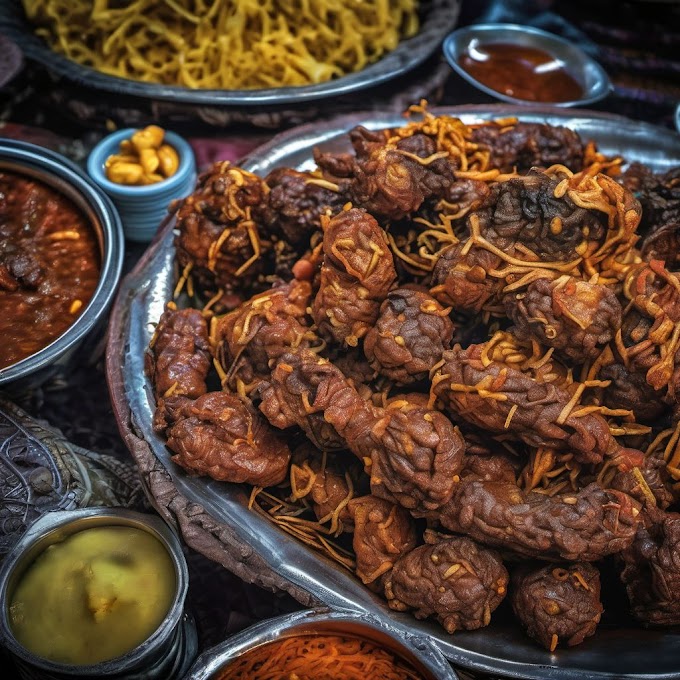Russian desserts hold a cherished place in the hearts and palates of many, offering a sweet conclusion to hearty meals and an embodiment of Russian culinary tradition. These desserts often represent the rich tapestry of Russia's culture, history, and diverse geographical influences. From the grandeur of classic creations to the innovations of modern pastry chefs, Russian desserts provide a delightful exploration of flavors, textures, and aromas.
### Classic Russian Desserts
#### 1. **Medovik (Honey Cake)**
Medovik, a cornerstone of Russian dessert culture, stands out for its distinct layers of honey-infused cake. Each layer is meticulously crafted and later coated with a luscious creamy filling, often made with sweetened condensed milk. The cake is allowed to meld, resulting in a soft, melt-in-your-mouth texture. Some variations incorporate layers of caramel or chopped nuts, adding complexity to the flavors.
#### 2. **Ptichye Moloko (Bird's Milk Cake)**
Ptichye Moloko, known as "bird's milk," is a dessert with a cloud-like mousse filling atop a delicate layer of sponge cake. Achieving the perfect texture for the filling is an art, demanding precise preparation to create the desired lightness. The cake is elegantly finished with a glossy chocolate glaze, making it a visual and culinary delight.
#### 3. **Kulich (Easter Bread)**
Kulich, a towering cylindrical Easter bread, is an essential part of Russian Orthodox Easter celebrations. This sweet, yeast-based bread is enriched with butter, eggs, dried fruits, and a blend of aromatic spices. The top is adorned with a powdered sugar glaze, symbolic of the joy and renewal associated with Easter. Modern variations often include colorful candied fruits and edible flowers for a more vibrant appearance.
#### 4. **Pirozhki**
Pirozhki, beloved across Russia, are small, round pastries with various fillings. The dough can be yeast-based, resulting in a fluffy, slightly sweet casing. Fillings range from savory, such as minced meat, potatoes, or cabbage, to sweet options like berries, jams, or apples. These delectable hand-held treats are often enjoyed as a quick snack or part of a meal.
#### 5. **Syrniki**
Syrniki, often regarded as farmer's cheese pancakes, are a staple in Russian households. The preparation involves using quark or cottage cheese, mixed with eggs, flour, and a touch of sugar. The pancakes are then pan-fried until golden brown, creating a crispy exterior while maintaining a soft, creamy center. Served with sour cream, jam, or honey, syrniki are a delightful breakfast or dessert option.
### Regional Variations
#### 1. **Tula Gingerbread (Tulsky Pryanik)**
Originating from the city of Tula, Tula gingerbread holds a special place in Russian confectionery. Made with a combination of rye flour, honey, and an assortment of spices, these gingerbread cookies are often intricately shaped and decorated, reflecting the region's unique artistic heritage. Some variations include a layer of sweet fruit preserves or a chocolate coating.
#### 2. **Karelian Pies (Kalitki)**
Karelian pies are a culinary gem from the Karelia region. They consist of a thin, unleavened rye crust filled with a mixture of rice and milk. These pies are a simple yet satisfying delicacy, often served with a generous dollop of butter, showcasing the region's emphasis on natural, straightforward flavors.
#### 3. **Kvass (Fermented Beverage)**
While not a dessert, kvass is a traditional beverage ingrained in Russian culture. Particularly popular during the warmer months, kvass is made from fermented bread and boasts a slightly sweet and tangy flavor. It is a refreshing beverage choice, often paired with various Russian desserts for a complete culinary experience.
### Modern Twists and Innovations
In recent years, contemporary chefs and bakers have infused modern elements into traditional Russian desserts, presenting familiar treats in innovative ways. These variations often incorporate global flavors and experimental techniques while staying rooted in Russian dessert traditions. Matcha-flavored medovik or Ptichye Moloko infused with exotic fruit flavors are just a few examples of the delightful fusions emerging in the modern dessert landscape.
### Exploring Lesser-Known Russian Desserts
#### 1. **Zefir**
Zefir is a sweet, cloud-like dessert made from fruit puree (typically apple puree), agar-agar, and egg whites. The mixture is whipped to achieve a light, airy consistency and set into molds. Zefir is often dusted with powdered sugar or desiccated coconut, making it a visually appealing and deliciously delicate dessert.
#### 2. **Blini**
Blini, thin Russian pancakes, are a versatile treat that can be enjoyed in both sweet and savory variations. The sweet blini are typically served with sour cream, jam, honey, or condensed milk. Additionally, blini can be filled with sweet fillings like cottage cheese or chocolate spread for a delightful dessert experience.
#### 3. **Plombir**
Plombir is a creamy, dense ice cream that has been a beloved Russian treat for generations. It often contains high-quality dairy and flavors like vanilla, chocolate, or berries. Plombir is a perfect cooling dessert, especially during warm Russian summers.
### Conclusion
Russian desserts are a testament to the rich culinary heritage and cultural diversity of Russia. Whether you're savoring the classics deeply ingrained in tradition or delighting in modern interpretations, each dessert provides a unique sensory experience. The realm of Russian desserts is continuously evolving, celebrating the country's rich history while embracing contemporary influences. From the distinct layers of honey cake to the delicate mousse of bird's milk, every bite is a journey through time, tradition, and an array of enticing flavors, leaving a lasting impression on taste buds and hearts alike. Enjoying Russian desserts is more than just a gustatory pleasure; it's an exploration of history, culture, and the art of creating something sweet to nourish the soul.






%20(1).png)

